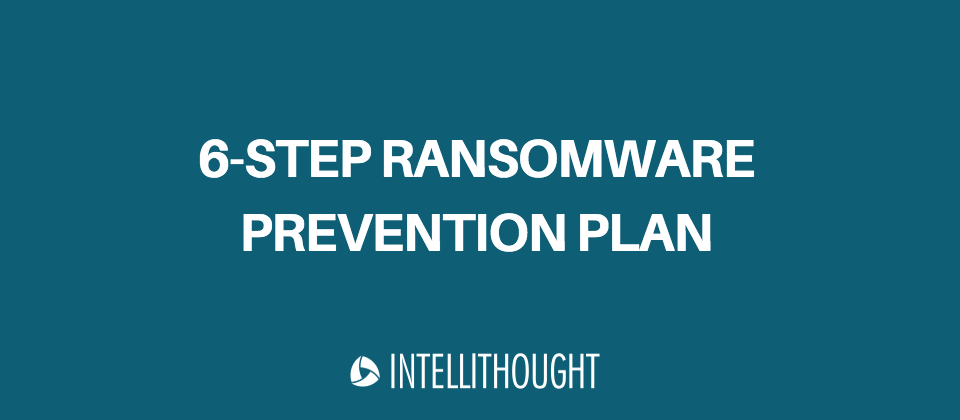
Ransomware is a type of cybercrime in which hackers use malware to gain unauthorized access to data or a computer system; then they lock down the system, denying access to authorized users until a ransom is paid. In exchange for the ransom, usually paid in bitcoin, the hackers provide the victims with the electronic keys required to unlock their data. Ransomware attacks often start when a victim clicks a link in a targeted phishing email, allowing the cybercriminals to harvest their credentials.
Read More: Latest Ransomware Trend: Ryuk And How To Respond
How to Prevent a Ransomware Attack
Approximately 90% of all system breaches are preventable through basic security measures. While ransomware attacks happen every day all across the U.S., there are steps you can take to protect your data and systems.
Read More: What Should Your Small Business’ Data Protection Plan Look Like?
1. Perform Nightly Backups
It’s vital to backup your systems both locally and in the cloud on a nightly basis. Backing up your data in two places provides an extra layer of protection. Performing nightly backups will allow you to have multiple backups available in case the most recent gets locked in an attack.
2. Install Antivirus / Antimalware Software
A good, managed antivirus/antimalware protection software can do a lot to protect your systems and data. Be sure to research thoroughly before you install any new programs to your computer.
3. Monitor in Real-Time
Your protection software should include real-time monitoring. If a threat is detected, additional protections should automatically be launched and the right people should be notified. Early threat detection can help prevent attacks before they happen.
4. Keep Your Systems and Software Updated
It’s critical to keep your operating systems and software up-to-date. This general rule of thumb should really be applied to everything from your work computer to your personal cell phone and the apps you use on a daily basis. These updates often include critical security patches that are designed to protect your data and devices.
Read More: 10 Tips To Protect Your Smartphone
5. Set Up Web Filtering
Set controls on what web content is accessible via your servers to minimize threats due to human error.
6. Think Before You Click
Phishing attacks are extremely common. Don’t click on links or open attachments in emails without properly vetting the source. After that, check for other signs like HTTPS, grammar, syntax, spelling, etc. that might alert you of the authenticity (or lack thereof) of the email.
Are you looking for a way to secure your data? The traditional break/fix approach is costly and ineffective. What if you could know when these issues were coming and address them proactively? Phoenix if your answer. Phoenix Data Protection was designed to keep the systems and data you depend on running smoothly.
Contact us via the form below or call us at 877.633.6001 between 8 am and 5 pm M-F.

